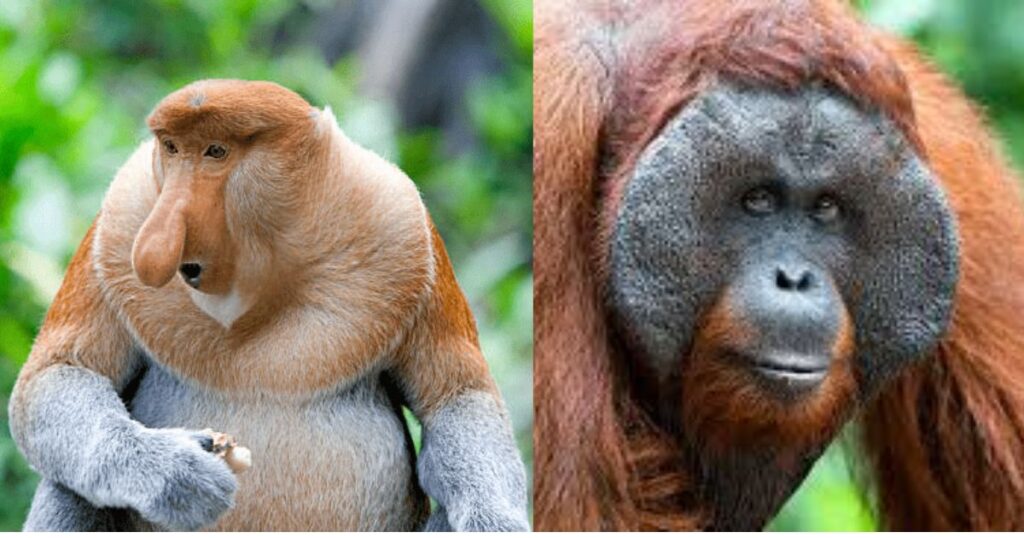Evolution has sculpted some truly remarkable creatures, each adapted to thrive in their unique environments. Among the most intriguing are the animals with oversized, protruding foreheads.
These enlarged craniums aren’t just for show – they serve vital purposes like attracting mates, aiding communication, cracking nuts, and even regulating body temperature.
Join us as we explore five fascinating species that showcase the wonders of these incredible adaptations.
Animals With Big Foreheads
What Makes Their Foreheads So Special?
An animal’s forehead size and shape can provide valuable insights into its behavior, intelligence, and evolutionary journey. These distinctive features often aid in essential tasks like:
- Visual Communication: Enlarged foreheads with intricate musculature enable complex facial expressions for social interaction and mating rituals.
- Physical Strength: Broad, sloping foreheads can withstand immense force, useful for ramming, nut-cracking, or battling rivals.
- Thermoregulation: Pronounced foreheads increase surface area, helping certain species regulate body heat in tropical climates.
- Intelligence: Many big-brained animals like great apes and cetaceans have high, domed foreheads indicative of advanced cognitive abilities.
1. Bald Uakari
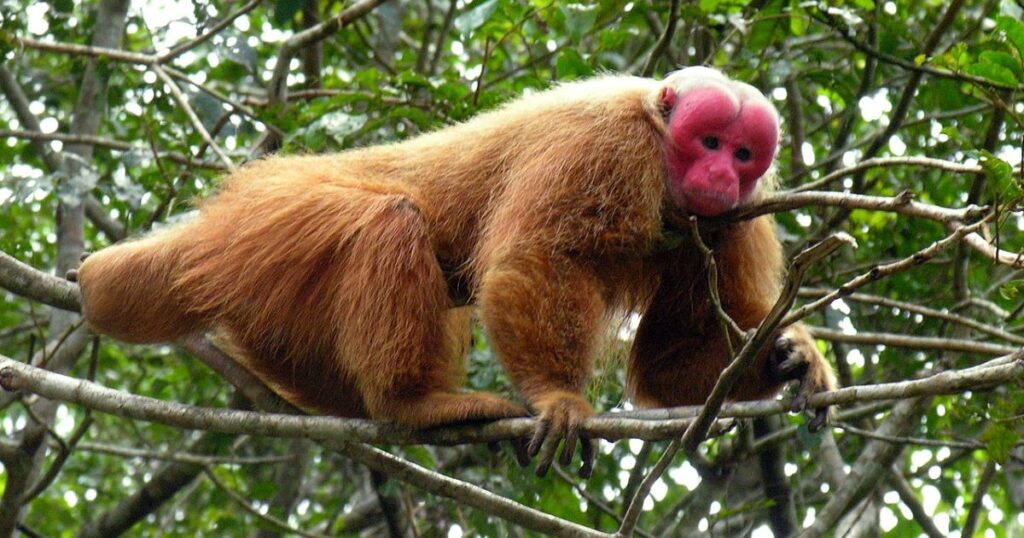
Deep within the lush Amazon rainforest dwells the striking bald uakari, a peculiar primate instantly recognizable by its vibrant red or pink bald forehead.
This hairless feature isn’t just for looks – it likely aids in temperature regulation and enhances the uakari’s ability to navigate the dense forest canopy using visual cues.
These arboreal acrobats live in close-knit social groups, gracefully traversing the treetops with the aid of their prehensile tails.
Despite their unique appearance, the bald uakari’s habitat is under constant threat from deforestation, making conservation efforts crucial for preserving this Amazon icon.
Quick Fact: The word “uakari” derives from the indigenous Tupi language, meaning “great foreheaded one.”
Read More : Albino Monkey: All About Appearance, Habitat, And Lifespan
2. Orangutan
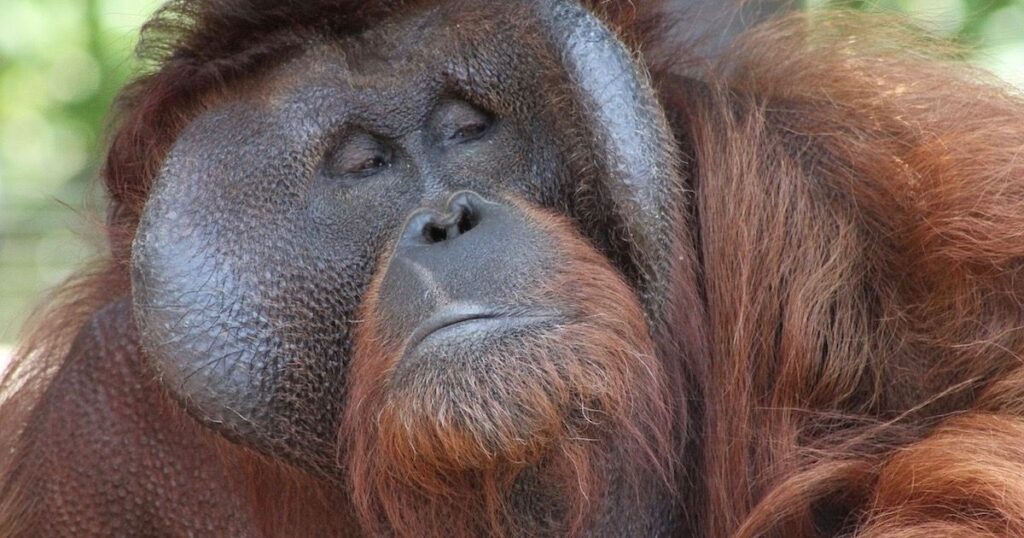
Renowned as the Old Man of the Forest, the orangutan’s wise, furrowed brow is an unmistakable trait of this gentle giant. Reaching heights of nearly 6 feet and weighing over 200 pounds, these arboreal apes are the largest tree-dwelling mammals on Earth.
Their protruding foreheads and sloping faces not only give them a sagely appearance but also provide the strength and dexterity needed for their arboreal lifestyles. Orangutans are highly intelligent, using tools and even basic forms of communication.
Tragically, these incredible primates are endangered, with only around 100,000 remaining in the wild due to rampant deforestation and poaching in their native Southeast Asian rainforests.
Conservation Effort: Organizations like the World Wildlife Fund work tirelessly to protect orangutan habitats and rehabilitate orphaned or displaced individuals.
3. Proboscis Monkey

Imagine a monkey with a bulbous, pot-bellied nose that could rival Pinocchio’s – that’s the peculiar proboscis monkey. This primate, native to the islands of Borneo and Sumatra, is renowned for the male’s extraordinarily long, floppy nose that can reach up to 7 inches in length!
But this bizarre nasal appendage isn’t just for show. The proboscis’ nose amplifies its honking calls, allowing it to communicate over long distances and attract potential mates.
These social monkeys live in troops of up to 30 individuals, foraging for leaves, fruits, and seeds in the lush Southeast Asian rainforests.
While not currently endangered, the proboscis faces threats from hunting and habitat loss, making protected areas like Malaysia’s Bako National Park vital for their survival.
Social Fact: Proboscis monkeys are known for their unique nasal “honking” sounds used for communication within their troop.
4. Beluga Whales
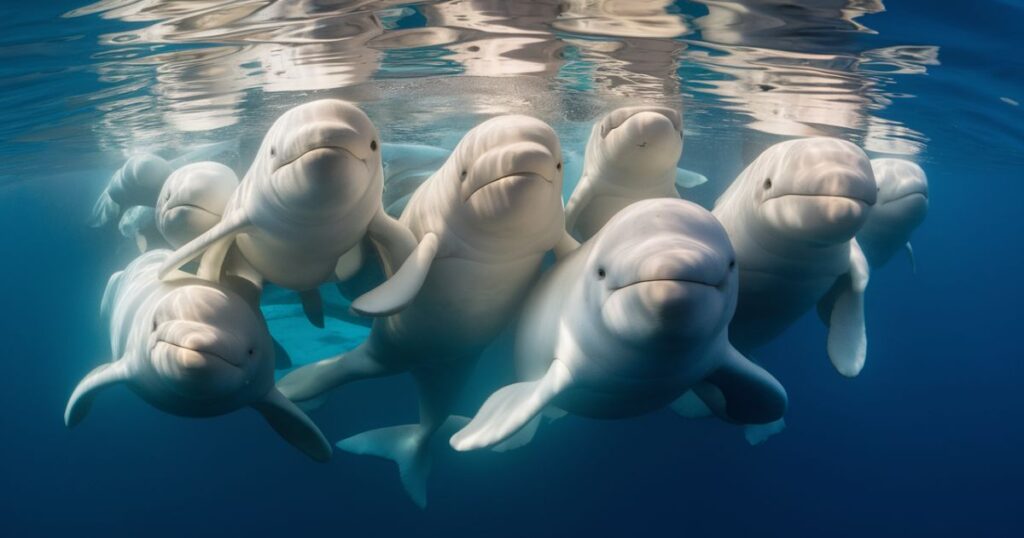
Affectionately dubbed the Canaries of the Sea, beluga whales are unmistakable with their bulbous foreheads and friendly, seemingly smiling faces.
These arctic cetaceans are among the most vocal whales, capable of mimicking human speech and producing an array of chirps, whistles, and clicks.
Their flexible facial muscles and bone structure allow belugas to make remarkably expressive gestures, earning them the Smiling Whale title. This adaptation may aid in social communication and coordinating their highly cooperative hunting techniques.
As climate change rapidly transforms their icy habitats, belugas face mounting threats, including ocean pollution, ship strikes, and diminishing food sources. Many conservation efforts aim to protect these intelligent sea canaries and their vulnerable Arctic environments.
Migration Pattern: Belugas are capable of migrating over 6,000 miles per year, following food sources between Arctic and sub-Arctic waters.
5. Green Humphead Parrotfish
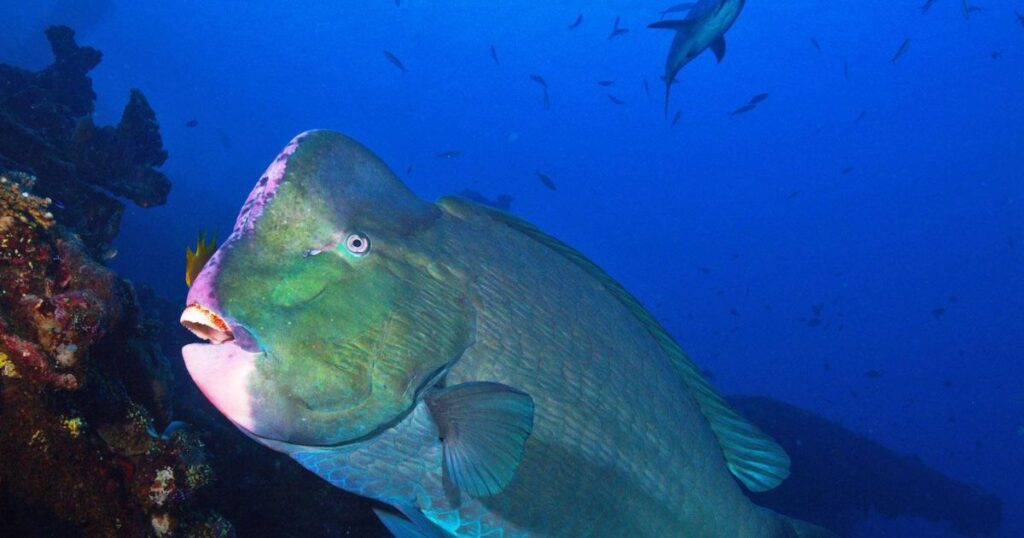
Venturing into the vibrant coral reefs of the Indo-Pacific, you may encounter the rotund green humphead parrotfish. This reef grazer sports a blunt, protruding “mustache” of a forehead that gives it an almost comical appearance.
But don’t let its whimsical look fool you – that bulbous head is a powerful tool used to chomp through coral polyps and break off pieces to expose the nutrient-rich inner layers.
These herbivorous fish play a vital role in controlling algae overgrowth and maintaining the delicate balance of reef ecosystems.
Sadly, humphead parrotfish are overfished in many regions, prized for their dense, bony flesh. Marine protected areas and responsible fishing practices are crucial to preserving these eccentric yet invaluable environmental engineers.
Ecological Role: A single humphead can consume up to 5 tons of coral reef per year, replenishing the reef’s growth cycle.
Conclusion
From the humid Amazon to tropical coral atolls, these five remarkable species showcase the incredible diversity and ingenuity of nature’s evolutionary marvels. Their exaggerate foreheads are more than just quirky accessories – they’re highly specialize tools adapt for survival.
Whether aiding in communication, physical feats, temperature regulation, or intelligence, these animals remind us that even the strangest features serve a purpose.
As we uncover the marvels of our planet’s biodiversity, it becomes increasingly vital to prioritize conservation and protect the habitats of these extraordinary creatures.

